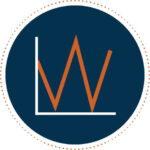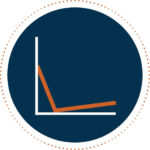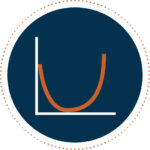04/03/20213 mins
The shapeshifting economic recovery

The Covid-19 pandemic has brought to light an interesting truth – whenever there’s a economic setback, humans will come up with increasingly complex (and downright odd) ways to describe it.
The financial crisis of 2008–2009 brought the phrase ‘quantitative easing’ into common use. The policy itself originated in Japan in the 1990s, and the English phrase is an awkward translation of the Japanese. According to the Bank of England, “quantitative easing involves us creating digital money”. But would anyone guess that from the name?
Watch out, there’s a shape-shifter about
The response to Covid-19 has spawned another oddity – the shapeshifting economic recovery. Will the recovery be V-shaped, L-shaped or K-shaped? Could it even take the form of a bathtub? There are a lot of plausible theories, and they all seem to involve a change in shape.
Of course, the idea of a recovery’s ‘shape’ isn’t a new concept, but the current plethora of theories is a new phenomenon. What does it all mean?

The worrisome ‘W’
In January, the UK narrowly avoided a ‘double-dip’ recession, with a recession defined as two consecutive quarters of negative GDP growth. In a W-shaped recovery, there’s a recession, a short-lived recovery followed by a further recession. Although the economic statistics confirm that a second recession has been avoided for now, economists warn that we aren’t quite out of the woods yet, as virus mutations could necessitate additional lockdown measures.

The loathsome ‘L’
An L-shaped recovery occurs where the economy fails to return to previous highs, even over a protracted period. Thanks to Covid restrictions, it’s possible that certain sectors of the economy have been permanently damaged, which could lead to an L-shaped recovery in those areas. The good news is the economic activity removed from some sectors is likely to reappear elsewhere, reducing the overall effect. Early indications from countries that successfully contained Covid-19 suggest that an L-shaped recovery is unlikely.

A victorious ‘V’
A V-shaped recovery is probably among the best outcomes: a swift recovery from a single recession. This shape is likely to accompany those industries fuelled by consumers keen to spend when life reopens. A good example of this occurred last summer as, with restrictions eased in the UK, retail sales grew by 3.7% in July. A similar pattern is likely after current restrictions end.

The unappealing ‘U’, or ‘bathtub’
With a bathtub, the economy falls and stays depressed, unable to climb back to pre-recession levels. The bathtub metaphor suggests the economy is trapped, unable to escape its steep sides. This image could well describe the UK economy over the last year, but the vaccine could be the helping hand needed to finally step out of the bath. Currently, this looks to be a likely scenario. Not only has the vaccination programme been promising but government stimulus and their ‘roadmap’ out of lockdown have buoyed sentiment.

The crazy ‘K’
The K-shaped economy is the hardest to visualise. It occurs when some sectors of the economy follow a ‘V’ but others move in the opposite direction. The contrasting fortunes of the technology and travel sectors in 2020 form this pattern. In essence, the K-shaped recovery is a combination of the V and the L, showing the divide between winning and losing sectors. This also tends to translate into growing wealth inequality, another headache for the regulator.
Our view
Whatever the eventual shape of the economic recovery, it’s important to remember that not all businesses will respond to it in the same way. As with every downturn, there are always going to be winners and losers as the pandemic abates.
Given this, we think that it’s important for investors to be positioned in companies that are poised to rebound sharply. We foresee the biggest upside in stocks whose prospects have been overlooked or unfairly written-off.
When lockdown measures are eventually eased, we expect a release of pent-up consumer spending to bolster the economy. Our portfolio is positioned in ‘recovery’ stocks and, regardless of the precise ‘shape’ describing it, we’ll continue to focus on ensuring that our portfolio is in good shape.
Please remember that past performance may not be repeated and is not a guide for future performance. The value of shares and the income from them can go down as well as up as a result of market and currency fluctuations.
Please note that SIT Savings Ltd is not authorised to provide advice to individual investors and nothing in this article should be considered to be or relied upon as constituting investment advice. If you are unsure about the suitability of an investment, you should contact your financial advisor.



